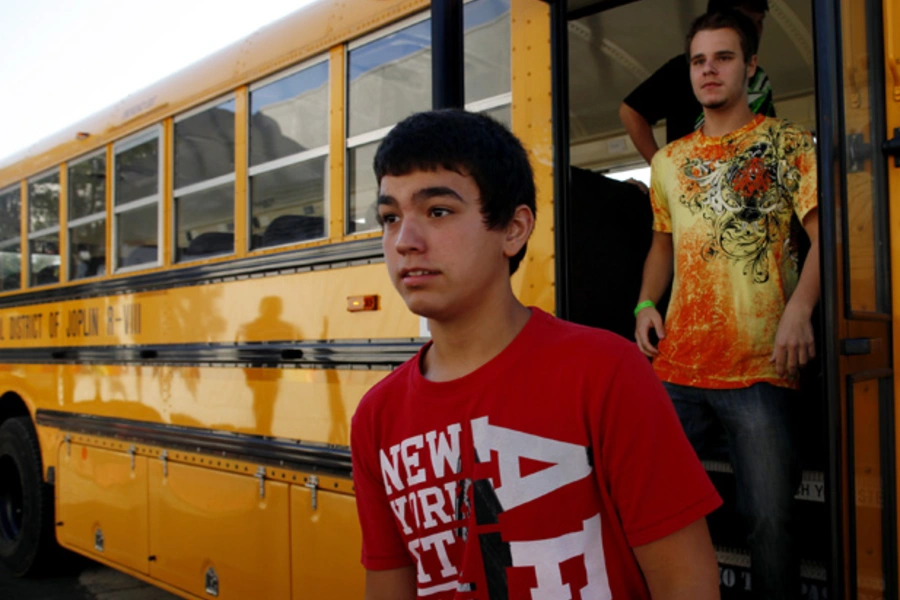Education Lessons: As Obama Begins Second Term, Big Gains May Come in Small Steps

More on:
U.S. students are now graduating from high school at the highest rate since good records began being kept in the mid-1970s, according to new data released today by the National Center for Education Statistics.
After spending yesterday in downtown DC watching the second inauguration of President Barack Obama -- and listening to commentators quickly split into those who saw his inaugural speech as ambitious and visionary and those who denounced it as overly liberal and partisan – I was heartened to see the new numbers. They showed, among other things, that the graduation rate of Latino students, who are the fastest growing demographic in the country, has jumped by 10 percentage points in just the past five years, from 61.4 percent in 2006 to 71.4 percent in 2010.
Watching the political gridlock in Washington, it is easy to conclude that progress in social policy has become almost impossible. We are regularly warned that a whole raft of serious problems – government debt, climate change, spiraling health care costs – are escalating while the government fails to agree on the big solutions that such big problems seem to require. But in part we may just be too impatient. In a large, complex democracy, progress tends to come in small, sometimes unnoticed steps, rather than in huge leaps.
The gains in high school completion are a case in point. It is really only in the last decade or so that the United States made it a national goal to raise education performance; before that, education was left almost exclusively to the states. The No Child Left Behind act ushered in by President George W. Bush with strong Democratic support did, for all its flaws, put the weight of the federal government behind education reform. The Obama administration, while tweaking the approach in various ways, has continued to use an array of both sticks and carrots to try to encourage states to raise their game.
According to the latest statistics, the on-time high school graduation rate rose to 78.2 percent in 2010, up from just 71.7 percent in 2000. Including GEDs, about 88 percent of Americans had earned a high school or equivalent degree in 2010. Can the increase in high-school graduation rates be attributed to the national focus on education? As with so many social policies, it’s hard to know for sure. Some experts attributed the improvement to focused strategies for helping low-performing students at risk for dropping out. But others pointed to external factors like falling teen pregnancies, and the deep recession which reduced job opportunities for high-school dropouts and increased the incentive to stay in school.
U.S. high school completion rates are still far, far too low – the U.S. ranks 22nd out of the 27 advanced countries in the Organization for Economic Cooperation and Development. But at least the arrows are now pointing in the right direction.
Is similar progress possible in other areas? It may be happening already even as we fail to notice. There was no grand bargain on taxes and spending in President Obama’s first time, and one doesn’t seem terribly likely in the second. Yet little by little the government’s fiscal position is improving. As Ezra Klein pointed out in the Washington Post last week, the various spending cuts and tax increases already enacted have solved about two-thirds of the problem of putting the country back on a stable fiscal path for the medium-term. On climate, while cap-and-trade legislation has been stillborn, the combination of the recession-induced economic slowdown, more aggressive regulation of emissions by the Obama administration, and the falling price of natural gas due to new extraction technologies currently has the U.S. roughly on track to meet its pledge to reduce greenhouse gas emissions to 2005 levels by 2020. Even health care costs, which continue to grow far too rapidly, grew much more slowly in the past three years than they did over the previous decade.
President Obama put a big list of problems on the table in his inaugural address – economic inequality, immigration, gun violence, and climate change. In none of these, with the possible exception of immigration, is he likely to get a big, grand bargain solution. But that does not mean that progress is impossible.
The lesson from recent years is not that big solutions are not needed, but instead that focusing over time on big social problems, and acting in small increments where larger ones are impossible, can still produce significant gains. What matters most is moving in the right directions.
More on:
 Online Store
Online Store